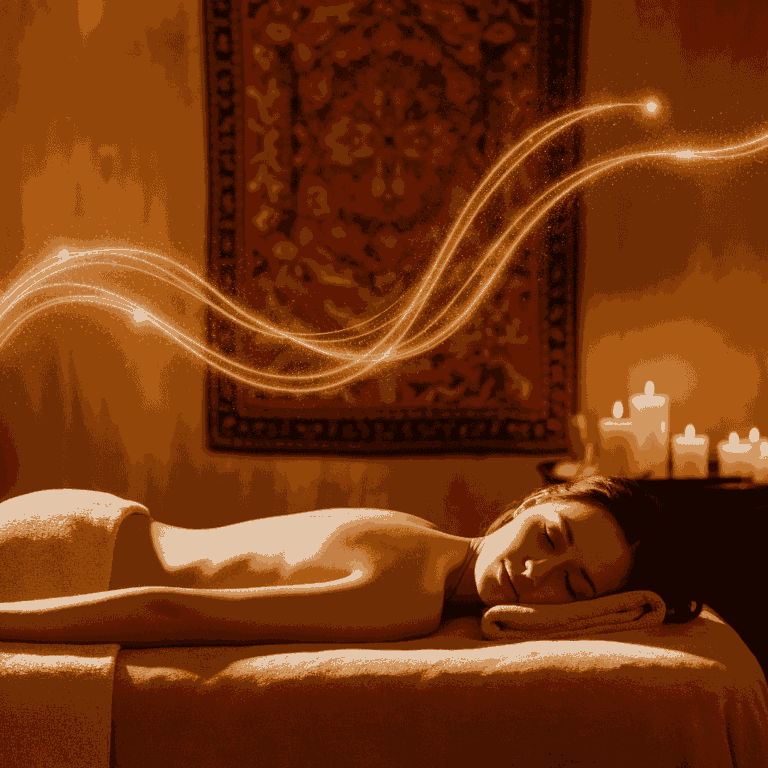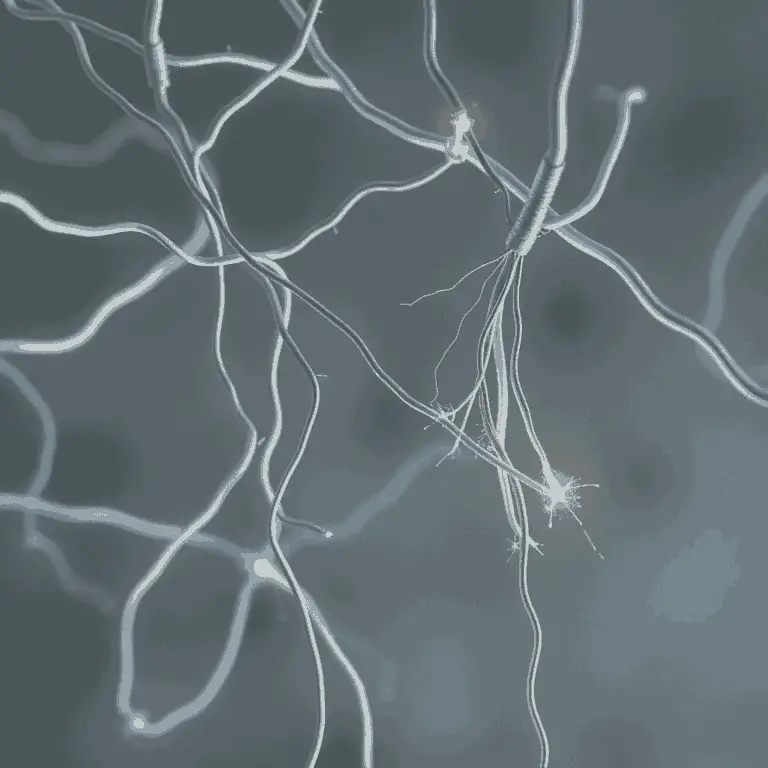Over the years, many individuals have sought relief from chronic pain through various treatments, including massage therapy. Research has highlighted the potential benefits of massage in alleviating discomfort associated with conditions such as fibromyalgia, arthritis, and chronic neck pain. They have found that therapeutic techniques may not only help reduce pain but also improve overall well-being by promoting relaxation and enhancing sleep quality. This blog post will explore the science behind massage therapy’s effectiveness for those living with chronic pain, providing insights and guidance for those considering this treatment option.
Key Takeaways:
- Therapeutic massage can effectively relieve chronic pain through various mechanisms, including muscle relaxation and reducing stress and anxiety.
- Studies show that regular massage sessions, particularly for specific areas like the neck and hands, can lead to significant improvement in pain levels and overall well-being.
- Massage therapy can be tailored to individual preferences regarding pressure, which is necessary for those with conditions like fibromyalgia that may require lighter touch.
Understanding How Massage Can Help Relieve Chronic Pain
Definition and Types of Chronic Pain
For many individuals, chronic pain is a pervasive experience that lasts longer than three months, often continuing even after the initial injury or illness has healed. This condition can manifest in various forms, including neuropathic pain, which results from nerve damage; nociceptive pain, stemming from tissue damage; and inflammatory pain, related to the body’s immune response. These different types underscore the complexity of chronic pain, which can vary widely among those affected and significantly influence their quality of life.
- Neuropathic pain: Nerve-related discomfort
- Nociceptive pain: Tissue damage response
- Inflammatory pain: Immune system reaction
- Migraine: Severe headaches with pulsing pain
- Fibromyalgia: Widespread musculoskeletal pain
After examining these categories, it is evident that chronic pain is not just a single ailment, but rather encompasses a range of experiences that require tailored approaches for management and relief.
| Type of Pain | Description |
| Neuropathic Pain | Pain resulting from nerve damage or dysfunction. |
| Nociceptive Pain | Pain caused by injury or damage to body tissue. |
| Inflammatory Pain | Pain stemming from the body’s inflammatory response. |
| Migraine | A severe headache often accompanied by nausea and sensitivity to light. |
| Fibromyalgia | A syndrome characterized by widespread musculoskeletal pain. |
Causes and Impact
Impact of chronic pain extends beyond physical discomfort; it can significantly affect an individual’s emotional and psychological wellbeing. Many patients report increased levels of stress, anxiety, and depression as they manage their ongoing symptoms. With chronic pain often resulting from a wide spectrum of sources—such as previous injuries, surgeries, or chronic health conditions—its effects can lead to diminished daily functioning and reduced social interactions, increasing the isolation felt by many.
Considering the multi-faceted nature of chronic pain, he or she may find themselves not only grappling with the physical symptoms but also facing emotional and social challenges. Research indicates that effective pain management strategies often require an integrated approach, combining medical treatments, physical therapy, and psychosocial support to address both the sources and consequences of chronic pain. This holistic view is crucial for understanding the complexity of living with chronic pain and the importance of personalized care plans.
The Role of Massage Therapy
Clearly, massage therapy has emerged as a promising complementary treatment for individuals dealing with chronic pain. It offers not only relief but also a pathway to improving overall well-being. Various studies have highlighted the effectiveness of therapeutic massage in alleviating pain in different areas of the body, such as the back, neck, and hands. Research demonstrates that consistent massage sessions can result in reduced pain perception, improved mobility, and enhanced psychological health, benefiting those with chronic conditions like fibromyalgia or arthritis.
Mechanisms of Action
Above all, the efficacy of massage therapy in pain relief can be attributed to several mechanisms of action. Therapeutic massage stimulates the nervous system, which can “close the pain gate” by increasing the activity of pain-relieving nerve fibers. This stimulation interrupts the transmission of pain signals to the brain, ultimately leading to a reduction in discomfort. Additionally, massage promotes relaxation in tense muscles, enhances blood circulation, and aids in the release of endorphins, the body’s natural painkillers. Collectively, these effects contribute to a holistic approach to managing chronic pain.
Types of Massage for Pain Relief
The broad spectrum of massage techniques available allows individuals to choose an approach that best suits their specific needs and preferences. Common types of massage used for pain relief include:
- Swedish massage
- Deep tissue massage
- Shiatsu
- Connective tissue massage
- Trigger point therapy
This multitude of options enables individuals to engage in a personalized pain management strategy.
| Type of Massage | Benefits |
| Swedish Massage | Enhances relaxation; alleviates tension |
| Deep Tissue Massage | Targets chronic pain and muscle knots |
| Shiatsu | Addresses energy flows and stress relief |
| Connective Tissue Massage | Improves mobility and reduces pain |
| Trigger Point Therapy | Relieves tension in specific muscle areas |
For instance, it is important for individuals to understand the various massage techniques and how they can be tailored to target specific pain points. Skilled therapists adapt their methods to address each person’s unique pain condition. Each type emphasizes a different approach to pain relief, allowing for a comprehensive treatment plan that may suit individual preferences.
- Tailored technique for specific pain relief
- Focus on areas of tension
- Combination of techniques for maximum effect
- Enhancement of overall physical and mental health
- Potential to reduce reliance on medication
This personalized approach is vital in achieving meaningful outcomes for those suffering from chronic pain.
Research on Massage and Chronic Pain
Notably, therapeutic massage has become an important area of research concerning its effects on chronic pain management. Various studies suggest that massage therapy can relieve pain by reducing muscle tension, enhancing circulation, and promoting relaxation. For example, a study published in the Annals of Family Medicine demonstrated that individuals receiving regular therapeutic massage sessions experienced significant relief from chronic neck pain compared to those who did not. Furthermore, participants of these sessions reported better sleep quality and reduced anxiety levels, indicating additional psychological benefits associated with massage therapy.
Effectiveness of Massage Studies
Above all, diverse research supports the effectiveness of massage therapy in alleviating chronic pain. A recent study highlighted in Complementary Therapies in Clinical Practice found that individuals who received regular hand massage exhibited a reduction in hand pain and noticeable improvements in grip strength over control groups. This outcome was particularly prominent among participants who engaged in self-massage techniques at home, further showcasing the potential for self-managed care alongside professional treatments.
Comparisons to Other Treatments
Above all, when comparing the effectiveness of massage therapy to other treatment modalities for chronic pain, studies reveal promising insights. Below is a table summarizing findings from recent comparative research:
Comparative Effectiveness
| Treatment Method | Effectiveness in Pain Relief |
| Massage Therapy | High, with multiple studies confirming its positive impact on various pain areas |
| Acupuncture | Moderate, beneficial for specific conditions but less generalized outcomes |
| Physical Therapy | Effective for rehabilitation but may require longer engagement |
For instance, while both massage therapy and physical therapy have shown effectiveness in chronic pain management, patients often experience more immediate relief through massage. A comparative analysis suggests that massage not only offers pain alleviation but also enhances overall well-being, including reductions in anxiety and improved sleep quality. This benefit may be attributed to massage’s unique ability to promote relaxation and alleviate stress, which can interfere with pain perception.
Additional Treatment Comparisons
| Treatment Method | Patient Satisfaction |
| Massage Therapy | High, with many reporting a preference for its personalized approach |
| Medication | Variable, with concerns about side effects influencing patient adherence |
| Yoga | Moderate, with effectiveness fluctuating based on individual preferences |
Risks and Contraindications
Now, while therapeutic massage can be beneficial for managing chronic pain, it is necessary to be aware of potential risks and contraindications. Individuals with certain medical conditions may need to approach massage therapy with caution. For example, those with heart problems, infectious diseases, phlebitis, or specific skin conditions should avoid massage, as it may exacerbate their situation. Additionally, massaging inflamed or infected areas can cause further irritation or spread an infection. It is advisable for individuals to consult with a healthcare professional before beginning massage therapy, ensuring it aligns with their health needs. For a more comprehensive overview on when massage can assist with chronic pain, consider visiting the information at Chronic Pain – When Can Massage Help.
When to Avoid Massage
By understanding when to avoid massage, individuals can prevent potential complications. Those who have acute injuries or conditions characterized by inflammation should refrain from receiving massage in the affected areas. Furthermore, if an individual is undergoing treatment for an active infection, it is best to postpone massage therapy until their health improves. Even certain chronic pain conditions, such as fibromyalgia or chronic fatigue syndrome, may necessitate adjustments in massage techniques. Therefore, ensuring an open line of communication with healthcare providers and massage therapists is vital for safety and effectiveness.
Finding a Qualified Therapist
Across the landscape of therapeutic massage, selecting a qualified therapist is paramount. To ensure safety and efficacy, individuals should seek licensed massage therapists who have expertise in chronic pain management. This may include therapists knowledgeable in specific techniques tailored to meet the client’s needs, as well as those who maintain open dialogue about pressure preferences. Potential clients are encouraged to ask about a therapist’s training and experience with specific conditions, which can enhance their overall treatment experience.
To find a qualified therapist, individuals can start by seeking recommendations from healthcare providers or trusted sources for medical massage therapy.They should verify the therapist’s credentials, including their licenses and certifications. Additionally, reading reviews and testimonials can provide insight into the therapist’s effectiveness and approach. Ensuring compatibility in communication and treatment styles is key to maximizing the benefits of massage therapy for chronic pain management.
Practical Application of Massage Therapy
Keep in mind that the effectiveness of massage therapy can vary widely depending on the individual’s unique condition and their specific pain management needs. In order to derive the maximum benefits from massage therapy, one must consider not only the technique used but also the frequency and duration of sessions. Research has shown that consistent massage can yield significant improvements in pain management; for instance, one study indicated that 60-minute sessions conducted two or three times a week over a four-week period alleviated chronic neck pain more effectively than fewer or shorter sessions. It is important for individuals to discuss their pain symptoms with a qualified massage therapist who can customize a treatment plan tailored to their situation.
Frequency and Duration of Sessions
One effective approach for individuals seeking relief from chronic pain is to establish a regular schedule for massage therapy. Frequent sessions can promote muscle relaxation, reduce inflammation, and lead to increased mobility over time. A study published in Annals of Family Medicine highlighted that patients who engaged in more frequent therapeutic massage experienced a greater reduction in pain levels compared to those who received massage less often. Therefore, determining the appropriate frequency and duration of treatments is pivotal in facilitating positive outcomes in pain management.
Self-Massage Techniques
Self-Massage is another beneficial avenue for managing chronic pain, as it empowers individuals to actively participate in their recovery. Using techniques such as gentle kneading, tapping, or rolling with a foam roller allows individuals to target specific areas of discomfort, which can lead to the release of tension and improved blood circulation. This practice is particularly useful for those who may not have immediate access to professional massage therapy sessions.
Due to the accessibility and convenience of self-massage, many people find it to be a valuable supplement to traditional massage therapy. By incorporating self-massage techniques into their daily routine, they can address muscle stiffness or pain on their own terms and at their own pace. This sustains the therapeutic benefits between professional sessions and cultivates a deeper awareness of their body’s needs, ultimately supporting their overall pain management strategy.
Integrating Massage into a Pain Management Plan
After identifying the various elements that contribute to chronic pain, individuals can benefit from integrating massage therapy into their comprehensive pain management plan. Therapeutic massage offers multiple mechanisms of pain relief, such as muscle relaxation and stress reduction, which can improve an individual’s overall quality of life. Doctors and physical therapists often recommend specific types of massage tailored to the individual’s unique pain conditions, whether that involves deep tissue work for more intense discomfort or lighter touch techniques for those with fibromyalgia or chronic fatigue syndrome. This personalized approach helps to ensure that the person feels comfortable and receives the most therapeutic benefit from each session.
Combating Pain Flare-Ups
Any individual living with chronic pain understands the unpredictability of pain flare-ups, which can be both physically and emotionally taxing. Therapeutic massage can serve as an effective strategy to manage these episodes, facilitating relief when individuals experience heightened discomfort. Studies, such as those published in the Annals of Family Medicine, have shown that consistent massage can significantly reduce chronic pain symptoms, making it a beneficial practice during flare-ups. Additionally, regular sessions may contribute to an overall decrease in anxiety and improved resilience, allowing individuals to better cope with sudden increases in pain.
Complementary Therapies
The integration of complementary therapies, such as massage, into a broader pain management strategy can enhance the overall effectiveness of treatment plans. Complementary approaches, including acupuncture and mindfulness techniques, often work synergistically with massage to provide holistic benefits. This multi-faceted method addresses not just physical symptoms but also emotional and psychological components associated with chronic pain, leading to a more comprehensive management experience for individuals.
In addition to massage, incorporating techniques such as acupuncture, yoga, and cognitive-behavioral therapy can provide a diverse toolkit for managing chronic pain. These therapies allow individuals to explore various avenues for relief, tailoring their approach based on personal preferences and responses. By including such complementary strategies alongside traditional pain management methods, individuals may enhance their capacity to cope with pain and reduce reliance on medication over time, ultimately leading to improved well-being.
Final Words
Conclusively, massage therapy has shown promising results in alleviating chronic pain through various mechanisms. Research indicates that it can effectively reduce pain in areas such as the back, neck, and hands, enhancing overall mobility and quality of life for individuals suffering from these conditions. For many, the therapeutic effects of massage extend beyond physical relief; they often report improvements in sleep quality and reductions in anxiety and depression levels. This multifaceted approach highlights the potential benefits of incorporating massage therapy into a comprehensive pain management strategy.
However, it is necessary for individuals to consider their unique circumstances when exploring massage as a treatment option. While numerous studies support its effectiveness, personal preferences regarding pressure and technique should guide each session. Consulting with a licensed therapist and informing them of any pre-existing conditions will help in crafting an appropriate and beneficial massage experience. Thus, for those dealing with chronic pain, massage therapy may serve as a worthwhile adjunct to traditional medical treatments.
FAQ
Q: Does massage therapy really help with chronic pain?
A: Yes, massage therapy can be beneficial for individuals suffering from chronic pain. Research has shown that therapeutic massage can relieve pain by relaxing sore muscles, improving blood circulation, and reducing stress and anxiety. Studies, such as those published in the Annals of Family Medicine and Complementary Therapies in Clinical Practice, have demonstrated that regular massage sessions can lead to significant reductions in pain levels, improved sleep quality, and lower anxiety and depression scores in patients. However, the effectiveness may vary depending on the individual and their specific pain condition.
Q: How often should I get a massage for it to be effective for chronic pain?
A: The frequency of massage therapy sessions can vary based on individual needs, but studies suggest that sessions two or three times a week for several weeks can be effective in managing chronic pain. For example, a study found that 60-minute sessions significantly alleviated chronic neck pain among participants. It is important to consult with a qualified massage therapist or healthcare provider to determine a personalized plan that addresses your specific pain issues.
Q: Are there any risks associated with massage therapy for chronic pain sufferers?
A: While massage therapy is generally safe for most people, there are specific situations where it may not be recommended. For example, individuals with infections, inflammatory skin conditions, or certain heart problems should avoid massage therapy. It’s crucial to choose a licensed massage therapist and consult with a healthcare provider to ensure that massage is appropriate for your condition. Additionally, communication with the therapist about your pain tolerance and specific needs will help tailor the massage experience for optimal results.










